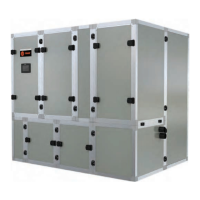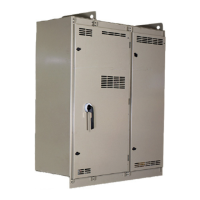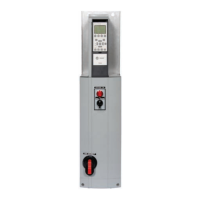PKG-SVX027D-EN
67
WARNING
Explosion Hazard!
Failure to follow these instructions could result in
death or serious injury or equipment or property-only
damage.
Use only dry nitrogen with a pressure regulator for
pressurizing unit. Do not use acetylene, oxygen or
compressed air or mixtures containing them for
pressure testing. Do not use hydrogen mixtures
containing refrigerant and air above atmospheric
pressure for pressure testing as they may become
flammable and could result in an explosion.
Refrigerant, when used as a trace gas should only be
mixed with dry nitrogen for pressurizing units.
WARNING
Explosion Hazard!
Failure to follow instruction below could result in
death or serious injury.
Do not exceed unit nameplate design pressures when
leak testing system.
WARNING
Refrigerant under High Pressure!
Failure to follow instructions below could result in an
explosion which could result in death or serious
injury or equipment damage.
System contains refrigerant under high pressure.
Recover refrigerant to relieve pressure before
opening the system. See unit nameplate for
refrigerant type. Do not use non-approved
refrigerants, refrigerant substitutes, or refrigerant
additives.
Note: These service procedures require working with
refrigerant. Do not release refrigerant to the
atmosphere! The service technician must comply
with all federal, state, and local laws.
When leak-testing refrigerant systems, observe all safety
precautions. Leak test only one circuit at a time to minimize
system exposure to potentially harmful moisture in the air.
System Repair
1. Connect R-410A refrigerant cylinder to charging port,
add refrigerant to reach pressure of 12 to 15 psig.
2. Disconnect refrigerant cylinder. Connect dry nitrogen
cylinder to high side charging port and increase
pressure to 150 psig. DO NOT exceed unit nameplate
design pressures. If testing complete system, low side
design pressure is maximum.
3. Check piping and/or components as appropriate for
leaks.
4. Recommend using electronic detector capable of
measuring 0.1 oz/year leak rate.
5. If a leak is located, use proper procedures to remove
the refrigerant/nitrogen mixture, break connections and
make repairs. Retest for leaks.
6. Make sure all service valves are open.
Brazing Procedures
WARNING
Explosion Hazard and Deadly Gases!
Failure to follow all proper safe refrigerant handling
practices could result in death or serious injury.
Never solder, braze or weld on refrigerant lines or any
unit components that are above atmospheric
pressure or where refrigerant may be present. Always
remove refrigerant by following the guidelines
established by the EPA Federal Clean Air Act or other
state or local codes as appropriate. After refrigerant
removal, use dry nitrogen to bring system back to
atmospheric pressure before opening system for
repairs. Mixtures of refrigerants and air under
pressure may become combustible in the presence of
an ignition source leading to an explosion. Excessive
heat from soldering, brazing or welding with
refrigerant vapors present can form highly toxic
gases and extremely corrosive acids.
Proper brazing techniques are essential when installing
refrigerant piping. The following factors should be kept in
mind when forming sweat connections:
1. When heating copper in the presence of air, copper
oxide forms. To prevent copper oxide from forming
inside the tubing during brazing, sweep an inert gas,
such as dry nitrogen, through the tubing. A nitrogen
flow of 1 to 3 cubic feet per minute is sufficient to
displace the air in the tubing and prevent oxidation of
the interior surfaces. Use a pressure regulating valve or
flow meter to control the flow.
2. Ensure that the tubing surfaces requiring brazing are
clean, and that the tube ends are carefully reamed to
remove any burrs.
3. Make sure the inner and outer tubes of the joint are
symmetrical and have a close clearance, providing an
easy slip fit. If the joint is too loose, the connection’s
tensile strength is significantly reduced. Ensure the
overlap distance is equal to the inner tube diameter.
4. Wrap each refrigerant line component with a wet cloth
to keep it cool during brazing. Excessive heat can
damage the internal components.
Note: Use 40-45% silver brazing alloy (BAg-7 or BAg-
28) on dissimilar metals. Use BCup-6 brazing
alloy on copper-to-copper joints.
5. If using flux, apply it sparingly to the joint. Excess flux
will contaminate the refrigerant system.
6. Apply heat evenly over the length and circumference of
the joint.
7. Begin brazing when the joint is hot enough to melt the
brazing rod. The hot copper tubing, not the flame,
Maintenance

